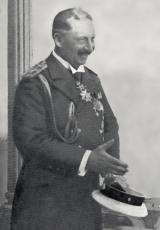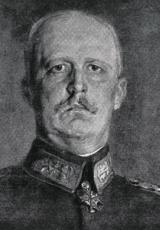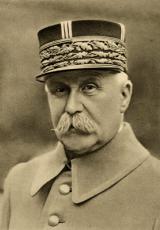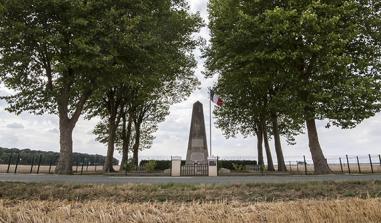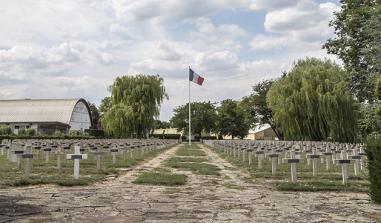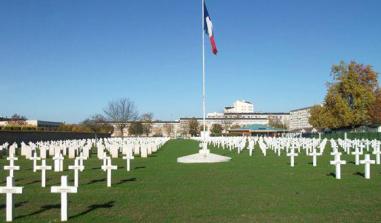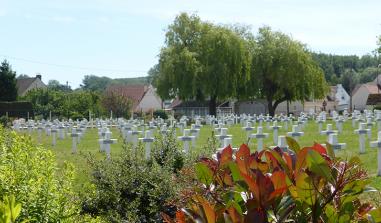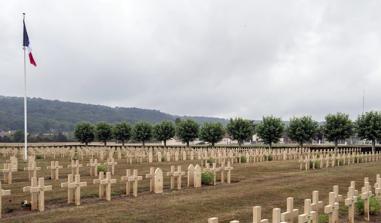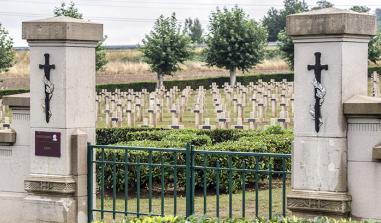The national necropolis of Noyon
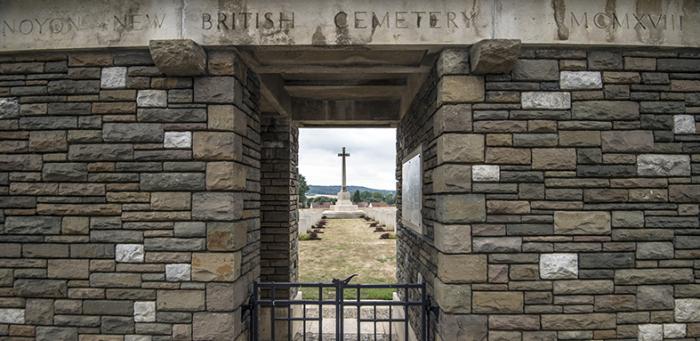
La nécropole nationale de Noyon. © ECPAD
Pour accéder au panneau d'information de la nécropole, cliquer ici 
The national necropolis of Noyon contains the remains of soldiers who died for France during the battles of the Oise between 1914 and 1918. Created in 1921, it was redesigned in 1934 so that the bodies of other combatants exhumed from various temporary cemeteries in the Oise could be brought there. Today, it contains the bodies of 1,726 Frenchmen, mostly killed during the final offensives of 1918, including nearly 700 interred in two ossuaries. The necropolis also contains the remains for four combatants who died for France in World War II. Among the French soldiers, there is also the body of a civilian victim, Émile Georget (grave 126 bis), whose remains were transferred on 15th January 1925. Born in 1898 in Cherbourg, this 16 year-old boy was shot by the Germans on 30th August 1914, having been accused of following troop movements on a map.
Occupied by the Germans on 30th August, Noyon, one hundred kilometres from Paris, was the scene of fierce fighting from 15th to 18th September 1914 but remained in the hands of the enemy, who imposed strict living conditions on the civilians. Following the German withdrawal on 18th March 1917, the French retook the ruined town but it was occupied again on 25th March. Intense shelling finally destroyed Noyon, whose cathedral still bears the scars. The allies resisted and decisively turned the course of the war in July 1918, eventually liberating Noyon, four-fifths destroyed, on 30th August 1918. A strategic and symbolic town, Noyon received the Legion of Honour for enduring this harsh occupation.
La nécropole nationale de Noyon. © Guillaume Pichard
La nécropole nationale de Noyon. © Guillaume Pichard
La nécropole nationale de Noyon. © Guillaume Pichard
La nécropole nationale de Noyon. © Guillaume Pichard
La nécropole nationale de Noyon. © Guillaume Pichard
La nécropole nationale de Noyon. © Guillaume Pichard
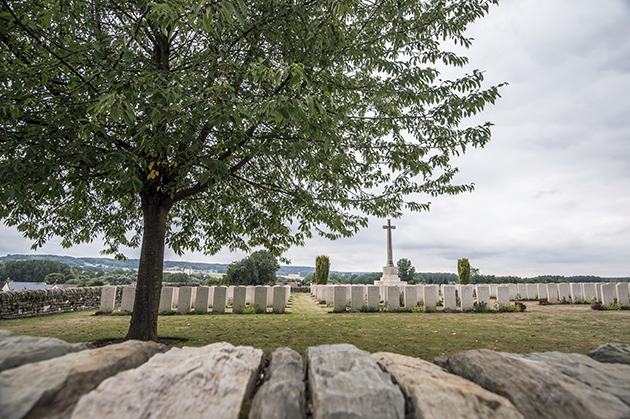
La nécropole nationale de Noyon. © ECPAD
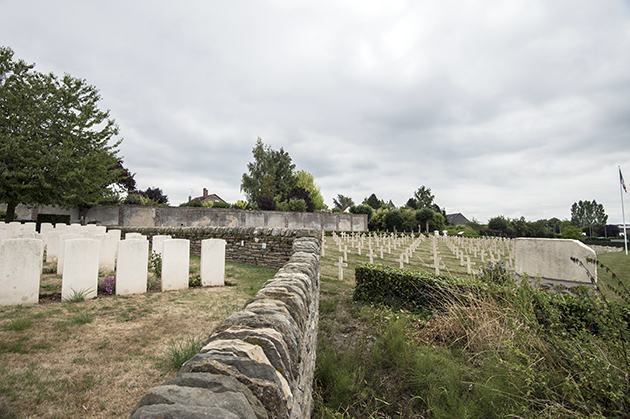
La nécropole nationale de Noyon. © ECPAD
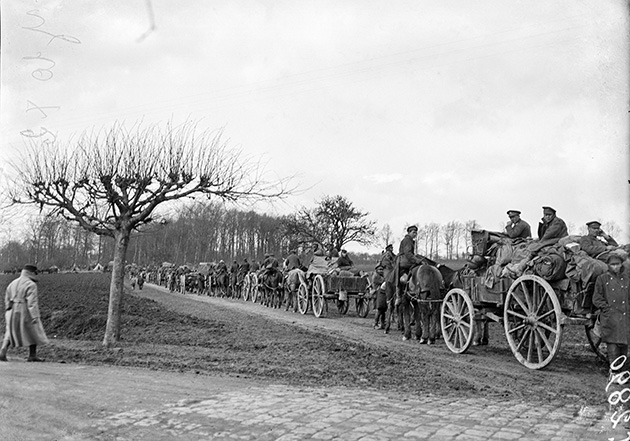
Troupes anglaises montant vers le front en 1918. © ECPAD
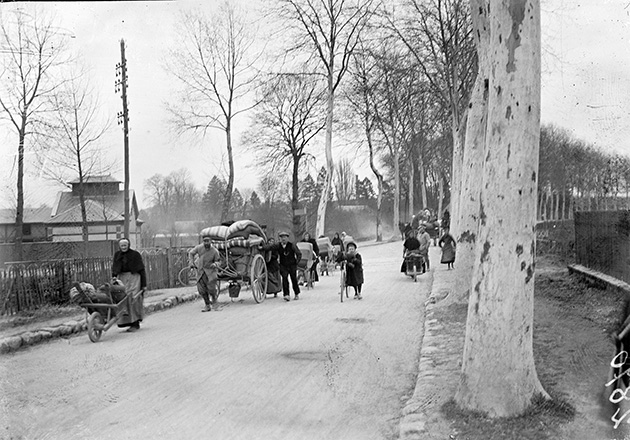
Population civile évacuée aux environs de Compiègne, mars 1918. © ECPAD/Baguet
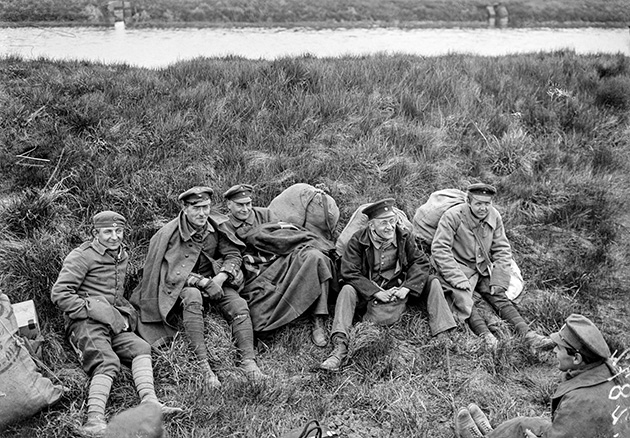
Évacuation de prisonniers allemands, mars 1918. © ECPAD/Baguet
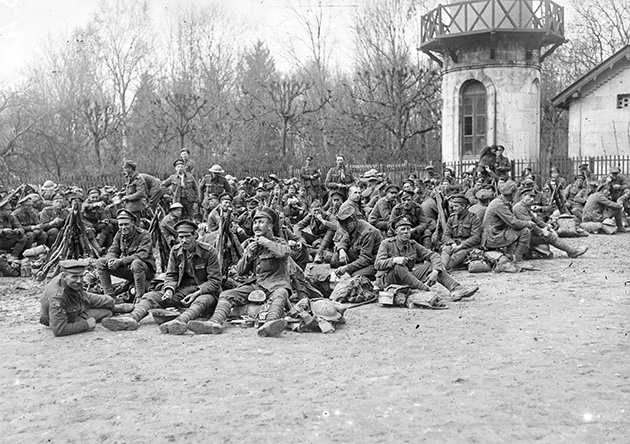
Soldats anglais allant au repos à Longpont, mars 1918. © ECPAD/Emmanuel Mas
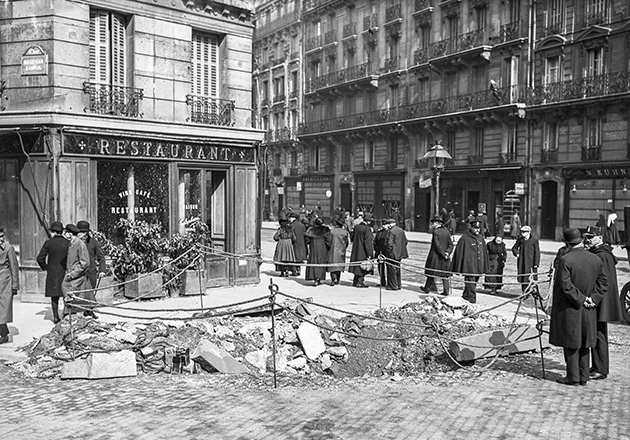
Obus tombé à l'angle de la rue de Rennes et du boulevard Raspail (Paris), bombardement du 30 mars 1918. © ECPAD/Albert Moreau
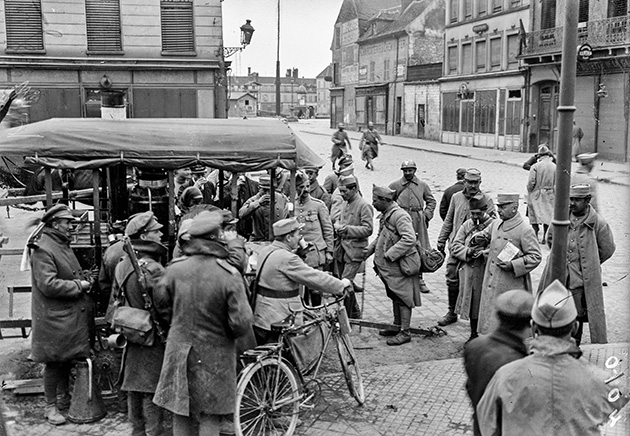
Soldats français rassemblés dans Noyon, août 1918. La ville de Noyon est reprise par la 3e armée le 30 août 1918. L’offensive de la 3e armée, dirigée par le général
Humbert, oblige les Allemands à battre définitivement en retraite. Avant d'abandonner la ville, l’ennemi piège un certain nombre de rues et d'édifices publics pour
ralentir la progression française. © ECPAD/Baguet
Practical information
Noyon
Visites libres toute l’année


